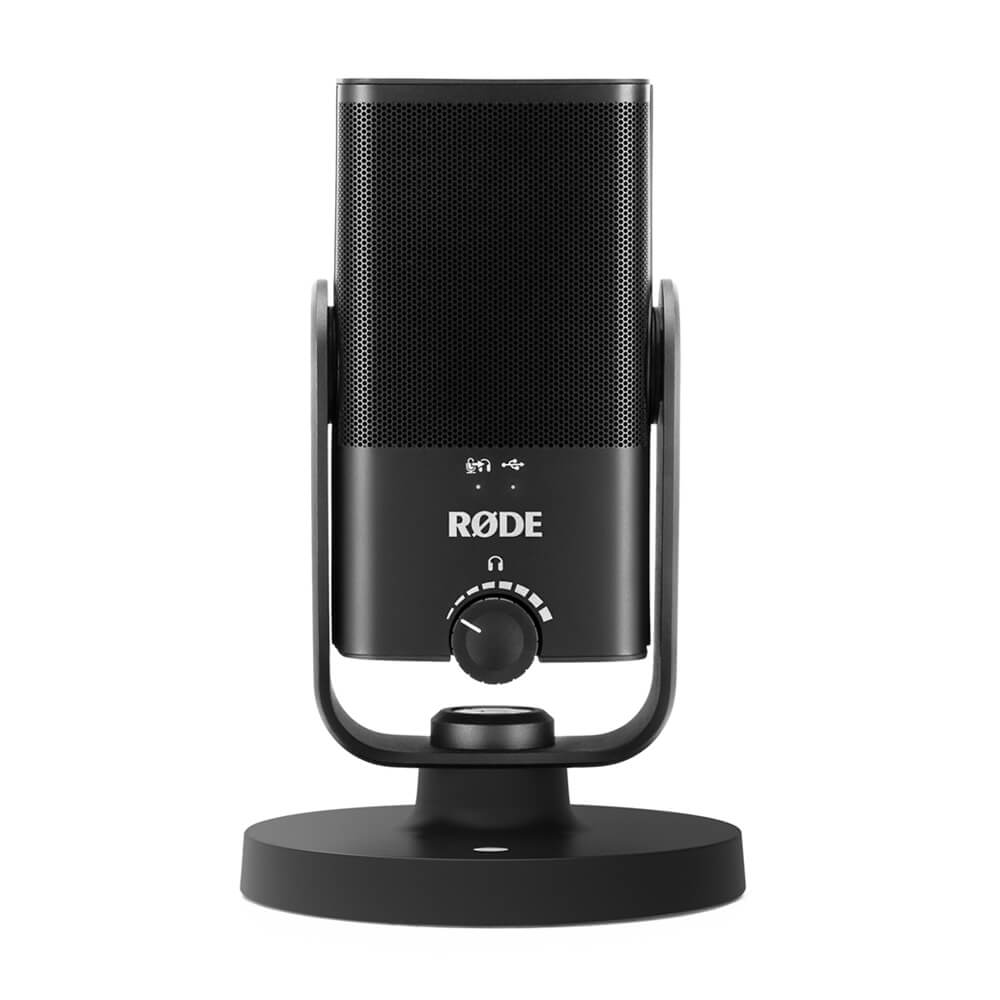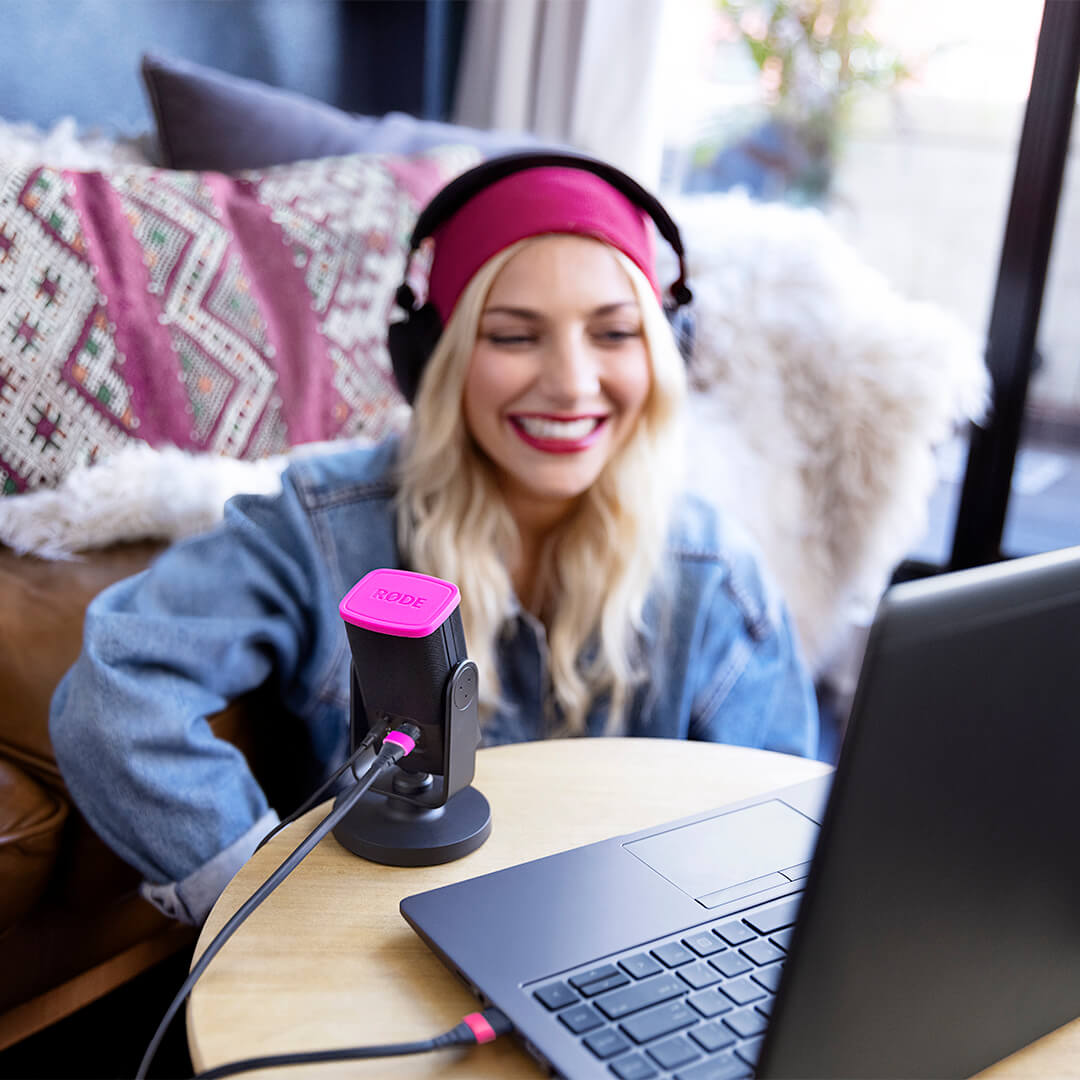NT-USB Mini
Studio-Quality USB Microphone
The NT-USB Mini brings the pristine sound quality of RØDE’s world-class studio mics to a compact, easy-to-use USB microphone. Designed to deliver crystal-clear, professional-quality audio direct to a computer or tablet, it’s the perfect microphone for gamers, podcasters, musicians, streamers, and content creators who want to be heard in full definition.
Key Features:
- High-quality condenser capsule that delivers warmth and presence for a clear, professional sound in all recording applications.
- Directional cardioid polar pattern, optimised to reduce room sound and focus on the subject, be it dialogue, vocals or instruments.
- In-built pop filter for reducing plosives.
- Fully compatible with our simple and powerful podcasting and streaming software, RØDE Connect
- In-built digital signal processing: noise gate, compressor, APHEX® Aural Exciter™ and Big Bottom™ (accessed via RØDE Connect)
- Integrated 360-degree swing mount for quick and easy positioning on a desktop, mic stand, or studio arm.
- Unique detachable magnetic desk stand that provides excellent isolation from knocks and bumps and is quick and easy to remove.
- Class-compliant USB output that works seamlessly with computers or tablets, no drivers or software needed – just plug in and hit record.
- Zero-latency headphone monitoring eliminates distracting echo.
- Studio-quality headphone amplifier with precision level control.
- Steel and reinforced nylon resin construction, stylish matte black finish and compact, modern design.
- High-quality condenser capsule that delivers warmth and presence for a clear, professional sound in all recording applications.
- Directional cardioid polar pattern, optimised to reduce room sound and focus on the subject, be it dialogue, vocals or instruments.
- In-built pop filter for reducing plosives.
- Fully compatible with our simple and powerful podcasting and streaming software, RØDE Connect
- In-built digital signal processing: noise gate, compressor, APHEX® Aural Exciter™ and Big Bottom™ (accessed via RØDE Connect)
- Integrated 360-degree swing mount for quick and easy positioning on a desktop, mic stand, or studio arm.
- Unique detachable magnetic desk stand that provides excellent isolation from knocks and bumps and is quick and easy to remove.
- Class-compliant USB output that works seamlessly with computers or tablets, no drivers or software needed – just plug in and hit record.
- Zero-latency headphone monitoring eliminates distracting echo.
- Studio-quality headphone amplifier with precision level control.
- Steel and reinforced nylon resin construction, stylish matte black finish and compact, modern design.
Studio Sound, Simplified
The NT-USB Mini brings the pristine sound quality of RØDE’s world-renowned studio mics to a compact USB platform. It has been tailored specifically to deliver warmth and presence in your recordings and will sound amazing on dialogue, vocals, guitar – anything you throw in front of it.
It features a studio-grade headphone amplifier and a high-quality 3.5mm headphone output, complete with precision volume control, allowing you to easily monitor your audio. There is also a switchable zero-latency monitoring mode for eliminating distracting echo when recording. It’s incredibly easy to set up and use, with simple controls, an in-built pop filter, and a class-compliant USB output that works seamlessly with computers or tablets, no drivers or software needed. Just plug into your Mac, PC or tablet and hit record.
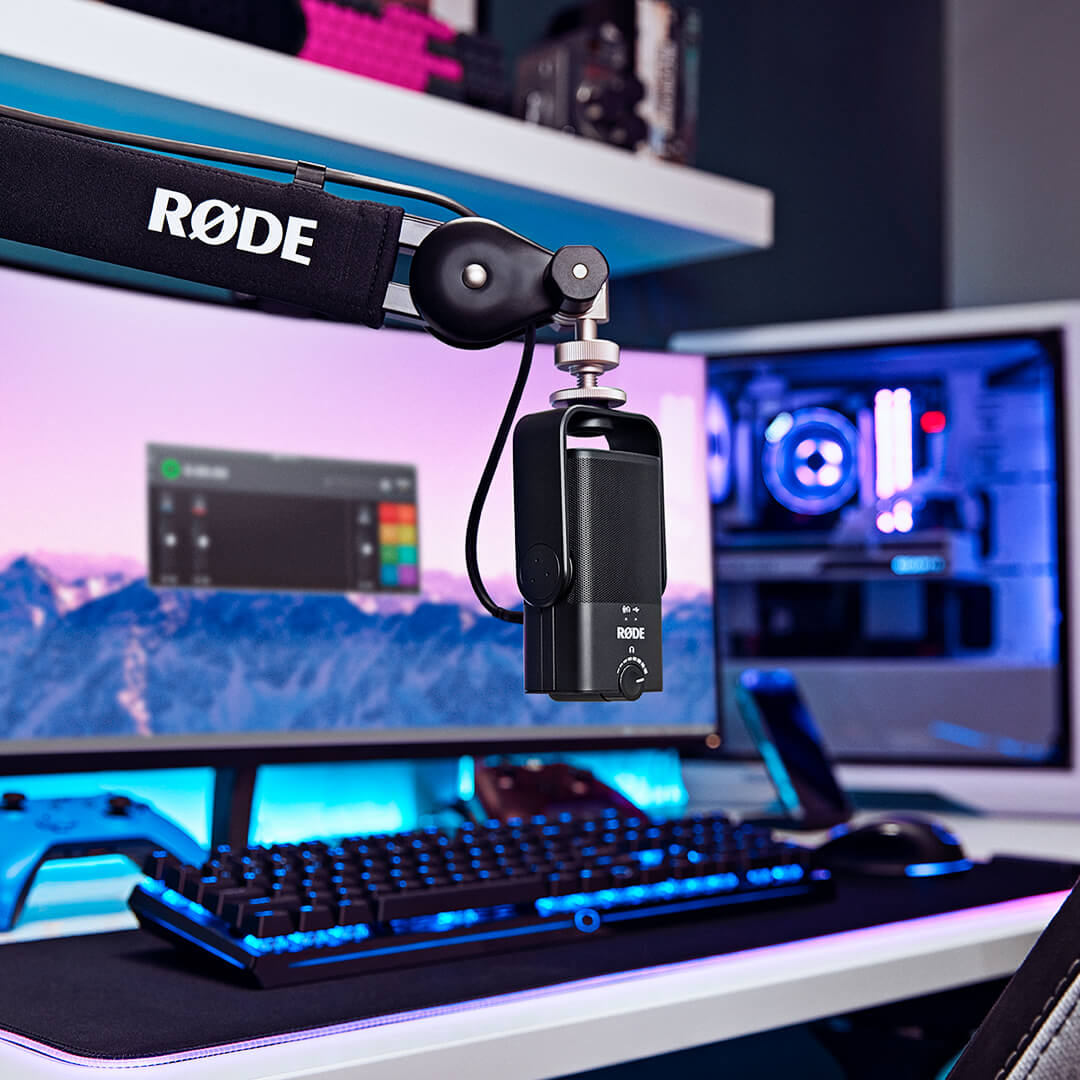
As Flexible As You Need To Be
The NT-USB Mini has been designed to be as flexible as you need to be. It features a unique detachable magnetic desk stand – not only does this provide a sturdy base on any desktop, it also makes it incredibly easy to remove and attach to a mic stand or studio arm. This and the unique 360-degree swing mount means you can position the mic upright, on an angle, sideways or upside down – wherever it needs to be to get the best recording possible.
Whether you’re streaming on Twitch, recording into your favourite DAW or taking a business call on Zoom, the NT-USB Mini will ensure you’re heard in full definition.
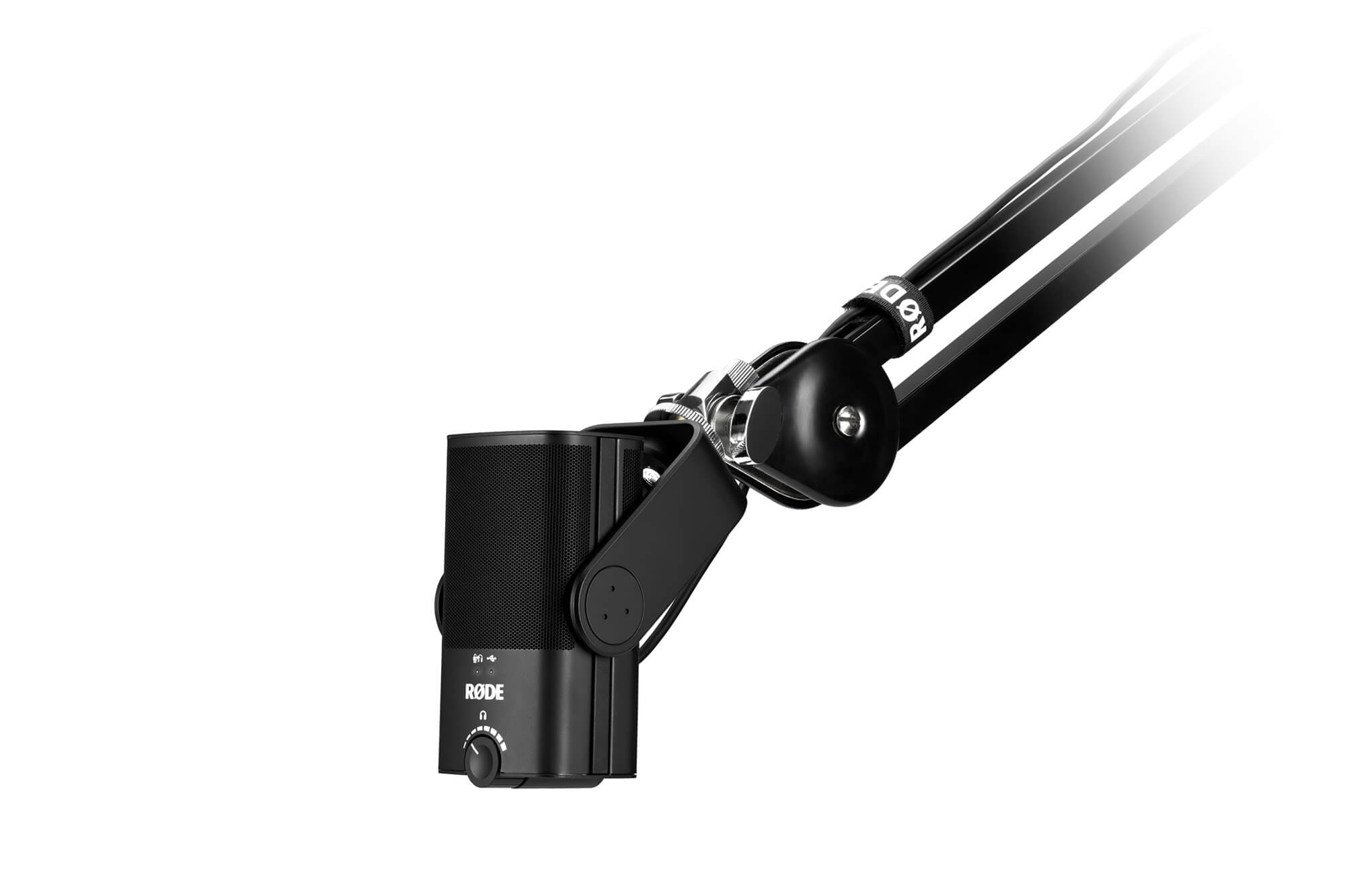
Stylish and Compact
The NT-USB Mini is the perfect addition to any desktop or home studio setup. At just 89mm wide and 141mm tall, it’s very compact, taking up only a fraction of precious desktop real estate. It also looks fantastic: sleek and stylish, with clean lines and a modern aesthetic. Hard-wearing steel and reinforced nylon resin construction ensure the NT-USB Mini is ready to take on the rigors of recording anywhere and everywhere.
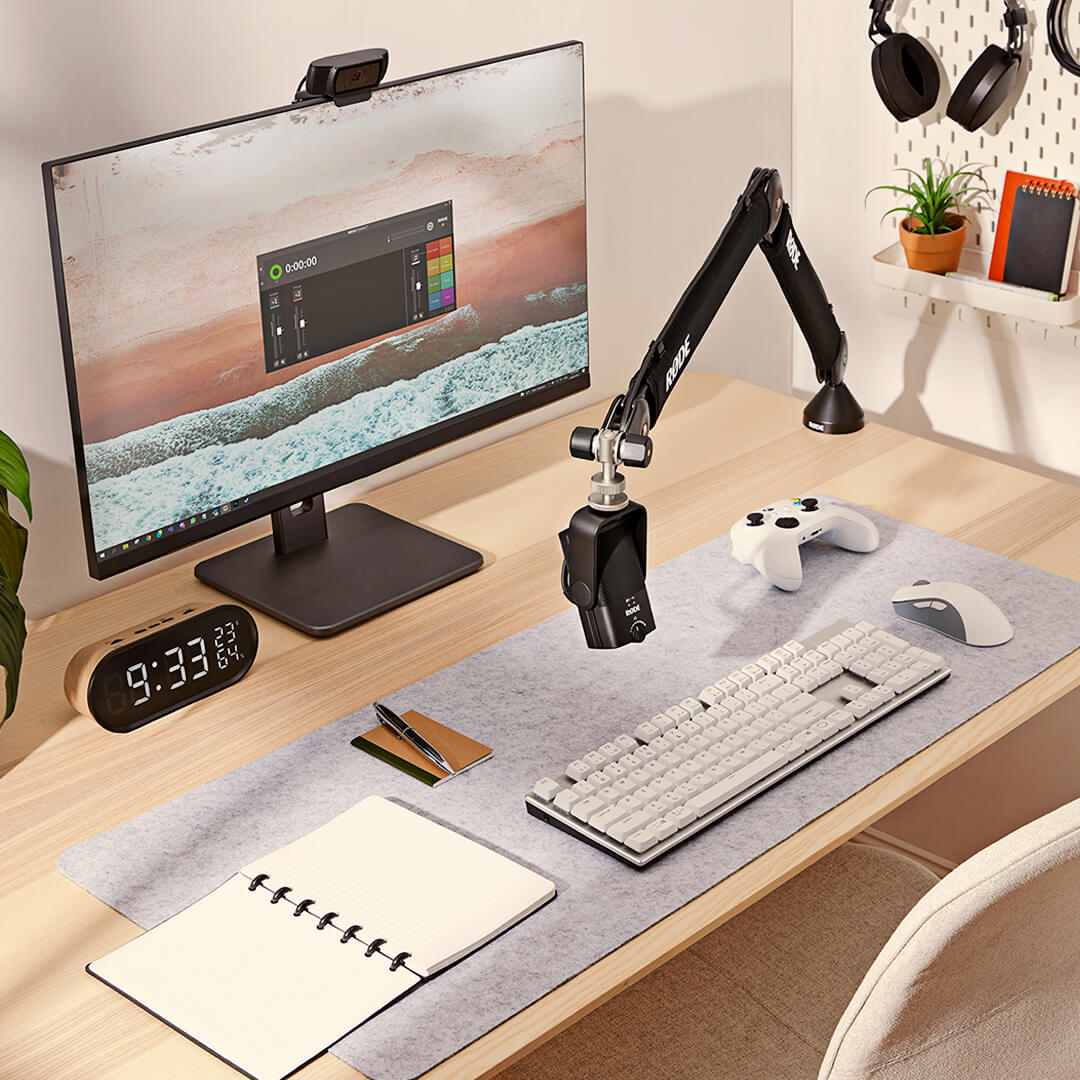
 RØDE Connect
RØDE Connect
RØDE Connect is a simple and powerful software solution for podcasting and livestreaming with the NT-USB Mini.
Unlock the True Potential of the NT-USB MiniRØDE Connect unlocks access to the NT-USB Mini’s in-built compressor, noise gate and legendary APHEX Aural Exciter and Big Bottom processors. Activated with a single click, each processor is optimised for the NT-USB Mini and will deliver an extra level of professional shine to your recordings.
Podcast the Easy WayConnect up to four NT-USB Minis to a single Mac or PC without the need for complex routing or complicated software. Featuring an intuitive, fully featured recording interface, virtual channels for connecting remote guests, and automatic mix-minus on each channel for crystal-clear, echo-free communication, this is the easiest way to make a professional podcast.
Stream like a ProTogether with the NT-USB Mini, RØDE Connect is a powerful solution for streamers and gamers who want to simplify their audio setup. Offering streamlined control over microphone audio and external applications, plus dedicated output controls for streaming apps like OBS or Xsplit, setting up livestream audio has never been easier.
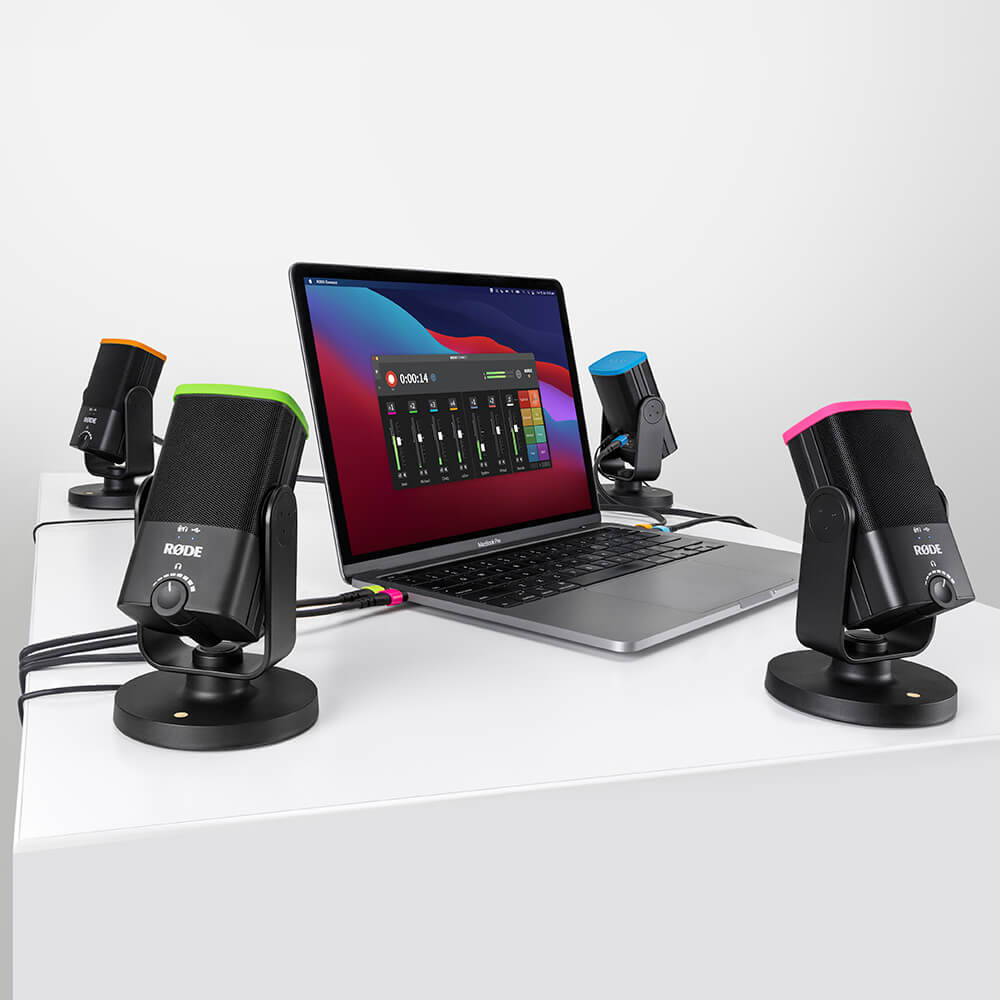
 RØDE Central
RØDE Central
When your NT-USB Mini is connected to a computer via USB, its firmware can be updated with the RØDE Central app. Simply download and open RØDE Central, plug in your NT-USB Mini and the prompt will appear for permission to update your microphone firmware.
Note: This option is not available for RØDE Central on mobile.
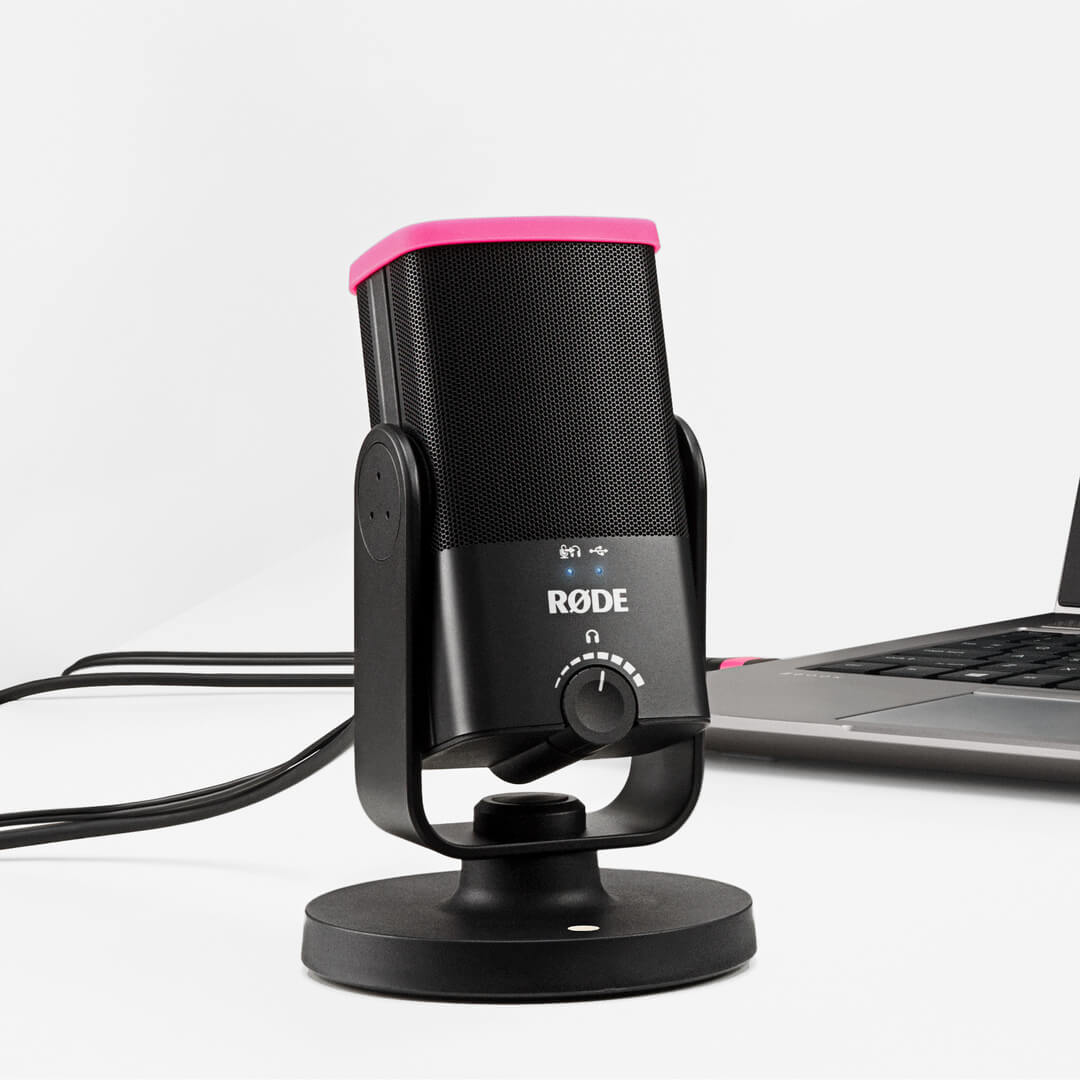
Specifications
Downloads
FAQs
The headphone amplifier in the NT-USB Mini is very powerful and easily capable of driving high-impedance headphones.
Yes, the NT-USB Mini has an in-built pop filter for reducing plosives. This differs from the NT-USB which has an external pop filter.
If you are still hearing an echo when you activate the zero-latency monitoring mode on the NT-USB Mini, you should mute your microphone channel output in your recording software.
Here’s an example. Let’s imagine you are adding the vocal track to a song. In your recording software, you have the other parts of the song - drums, guitar, bass and so on; you have created a track for the vocal and assigned the NT-USB Mini to this track to record. By default, your DAW will likely still be sending the output of the microphone back to the headphone along with the rest of the mix. You will hear this in addition as the zero-latency audio from the mic, meaning your voice might sound as if it has an echo or doubling effect on it.
To prevent this, mute the output of your vocal track in your software when you are recording the vocal. This means you will hear in your headphones two things - the full mix of the song, but without your voice, and the zero-latency monitor output of your voice. This makes for a more natural recording experience.
Once you’ve finished recording, don’t forget to unmute your vocal channel so you can listen to your song with the vocal track you just recorded in the mix. Also deactivate zero-latency monitoring so that you can edit your mix without any distracting sounds from the room being picked up by the mic and sent to your headphones.
The NT-USB Mini is a condenser microphone, which means it is quite sensitive and capable of cleanly picking up audio further from the microphone. This makes it great for a wide variety of applications, from recording acoustic guitar to taking a video call while sitting at a desk. For singing, livestreaming or voiceover production, we recommend setting up the microphone around 10-15cm from the mouth to take advantage of the proximity effect. Placing the microphone closer to the sound source will also improve the voice-to-background-noise ratio.
The NT-USB Mini is compatible with the PSA1+, DS1, Tripod and all RØDE boom poles.
When you record into your computer, you usually want to monitor (listen to) what you are recording in your headphones. By default, the audio is sent from the microphone to your computer and is then processed by your recording software. It is then sent back to your headphones. The problem with this is that it takes a fraction of a second for your computer software to process the audio and send it back to the headphones which can cause a distracting delay – this delay is known as latency and will vary in length depending on your setup. This delay can make it very hard to perform naturally, whether you’re singing or speaking. The zero-latency monitoring mode removes this distracting delay. This is achieved by sending the output of the microphone directly to the headphones in real-time, bypassing the computer. This signal is accompanied by the output from your computer, so you can still hear the output (for example, your backing track if you are singing, or your game sound if you're streaming), but allows a more natural and comfortable listening experience (which results in a better performance).
To activate this mode, simply press the volume knob on the front of the NT-USB Mini. You will immediately hear the output of the microphone in your headphones. To deactivate this mode, simply click the volume knob again.
Note: When using zero-latency monitoring mode, you may want to mute your microphone channel output in your software while recording, so you only hear the rest of the mix. This will ensure the most natural and echo-free sound.
The NT-USB Mini is more compact than the NT-USB. It also has an in-built pop filter, a magnetic base that is easily detachable, a 360-degree swing mount, and more streamlined, straightforward controls. This makes it a great portable, easy-to-use option. The NT-USB Mini also features built-in DSP that allows it to run the complex processes in RØDE Connect in real-time.
The NT-USB features a removable pop shield, a locking thread base for mounting to external shock mounts, along with a monitor mix control knob to fine tune your mic input/device output mix. Both microphones deliver pristine, studio-quality audio.
The NT-USB Mini will work with any device that supports class-compliant audio. This includes PCs, Macs, Android devices, and Lightning iOS devices when used with the camera connector kit. If there is a warning on your device that the mic draws too much power, then simply plug in the Lighting port of the adapter to a power supply.
The knob on the NT-USB Mini is an output control for your headphone levels. It is not an input control - your input level must be set on your computer or recording device. This knob also activates zero-latency monitoring mode, which is enabled by pressing it and is indicated by the top left LED.
The input level from the NT-USB Mini to your computer can be controlled through your system settings. For Mac, this will be in ‘Sound Preferences’ > ‘Input’ > ‘Input Volume'. For PC, it will be in ‘Recording Devices’ > click on “NT-USB Mini” > ‘Properties’ > ‘Levels’. The volume knob controls the output going to your headphones.
RØDE Connect is an ideal audio solution for podcasting and livestreaming with the NT-USB+ and NT-USB Mini, but can be used for a wide variety of recording applications, such as recording a voiceover.
RØDE Connect is a simple and powerful software solution for podcasting and streaming with the NT-USB Mini. Offering an intuitive, fully featured recording interface, the ability to connect up to four NT-USB Minis to a single computer, seamless integration with video call and streaming applications, and access to the NT-USB Mini's internal compressor, noise gate and APHEX audio processors, RØDE Connect is the easiest way to record a podcast and livestream with incredible audio.
There are many things you can do to get a clean recording with minimal spill between microphones. Try recording in the quietest place possible, ideally in a room with minimal reflective surfaces (such as floorboards). Place the microphones as far away from each other as possible, faced away from one another. Positioning each microphone less than six inches from you and your guests’ will also help to capture a clean signal (you may need to use a desk stand or studio arm like the RØDE DS1 or PSA1+ to achieve this).
